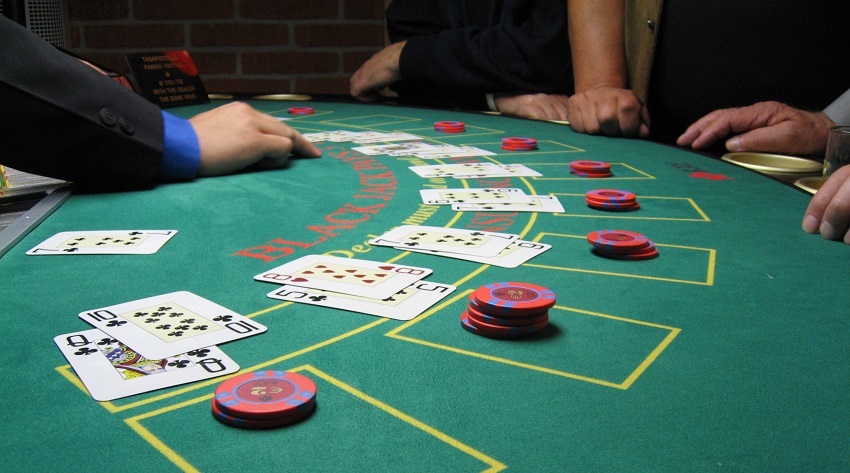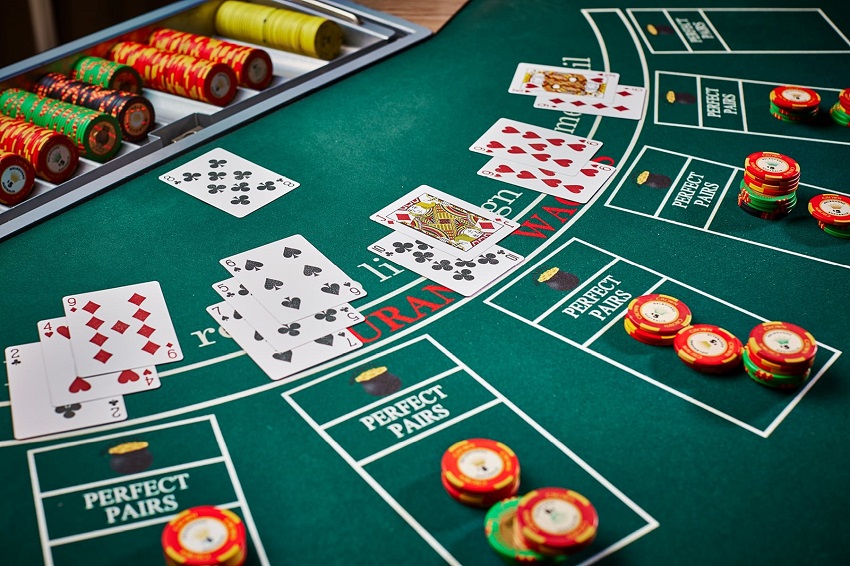What is Blackjack
Blackjack, often known as 21, is one of the most popular card games in the world, especially in casinos. The objective of the game is to beat the dealer by having a hand value closest to 21 without exceeding it. Players compete against the dealer rather than each other, aiming to achieve a higher total hand value than the dealer’s without going over 21. If the player’s hand exceeds 21, they bust and lose the game. Conversely, if the dealer’s hand exceeds 21, the dealer busts and the player wins, provided they haven’t busted as well. If you’re wondering how to play 21 card game, it’s essential to first understand the basic rules and objectives of Blackjack.
The game is played with one or more decks of standard playing cards, and each card has a point value. Number cards (2 through 10) are worth their face value, face cards (Kings, Queens, Jacks) are worth 10 points each, and Aces can be worth either 1 or 11 points, depending on which value benefits the hand the most. The flexibility of the Ace’s value is a crucial strategic element in Blackjack, often allowing players to adjust their hand to avoid busting or to achieve a more advantageous total. The book ‘Blackjack for Dummies’ is an excellent resource for new players looking to grasp the fundamentals of the game.
Blackjack begins with players placing their bets. Once the bets are placed, the dealer deals two cards to each player and two cards to themselves, with one of the dealer’s cards face-up and the other face-down (the hole card). Players then have several options for their next move, such as hitting (taking another card), standing (keeping their current hand), doubling down (doubling their bet and receiving one more card), or splitting (if they have two cards of the same value, they can split them into two separate hands). The round continues until all players have completed their actions, and then the dealer reveals their hole card and plays according to specific rules. Blackjack for beginners often starts with learning the different card values and understanding how to make strategic decisions during the game.
Blackjack’s appeal lies in its simple rules combined with the potential for strategic depth. While luck plays a significant role in the outcome of any given hand, skilled players can use strategies such as card counting and optimal decision-making to improve their odds over the long run. For those wondering how to play the 21 card game, mastering these fundamental aspects of Blackjack is essential. Whether playing in a casino or with friends, the excitement and challenge of trying to beat the dealer’s hand make Blackjack a timeless and engaging game. So, how do you play 21 card game? It all begins with mastering the basic rules and then moving on to more advanced strategies.

History of the Game
The origins of Blackjack are somewhat murky, but it is widely believed to have evolved from a number of similar games played in French casinos around the 1700s. One of these games was called “Vingt-et-Un,” which translates to “Twenty-One.” As the game spread through Europe and eventually to North America, it underwent various rule changes and adaptations. The modern version of Blackjack that we know today became popular in Nevada casinos in the 1930s when gambling was legalized there. Learning the history of Blackjack provides context and depth to the game, making it more enjoyable for players. There are various blackjack plays that you can employ to improve your chances of winning, such as hitting, standing, doubling down, and splitting.
How to Play Blackjack in a Casino
Playing Blackjack at a casino involves understanding the basic rules, strategies, and etiquettes associated with the game. Before sitting at a table, it’s crucial to know the blackjack table rules. Casinos often have specific rules that might vary slightly from one establishment to another.
When learning how to play Blackjack at a casino, players should first buy chips from the dealer or the cashier cage. Each game begins with players placing their bets. Once all bets are placed, the dealer will deal the cards. For those new to the game, blackjack for dummies resources can be helpful to get started.
How to Count Cards and Points?
Counting cards in Blackjack is a technique used by some players to gain an advantage over the house. This involves keeping track of the high and low-value cards that have been dealt, which can give players an idea of the composition of the remaining deck. Understanding the blackjack rules card values is critical for effective card counting.
Points in Blackjack are counted based on the value of the cards. Number cards are worth their face value, face cards (Kings, Queens, Jacks) are worth 10 points, and Aces can be worth either 1 or 11 points, depending on which value benefits the hand the most. Knowing how to count cards and points can significantly enhance a player’s strategy and chances of winning. Knowing the black jack card value system, where number cards are worth their face value and face cards are worth 10, is fundamental to the game.

How Are the Cards Dealt?
In a typical game of Blackjack, each player is dealt two cards, usually face-up. The dealer also receives two cards, one face-up and one face-down (the hole card). The dealing process is clockwise, starting from the dealer’s left. If you’re learning how to play Blackjack at a casino, observing the dealing process can provide valuable insights into the flow of the game. To learn to play blackjack, start by familiarizing yourself with the rules, practicing regularly, and studying different strategies.
The Value of the Cards
Understanding the value of the cards is fundamental to mastering Blackjack. The black jack card value system is straightforward:
- Cards 2 through 10 are worth their face value.
- Face cards (Jack, Queen, King) are each worth 10 points.
- Aces are unique in that they can be worth either 1 or 11 points, whichever is more advantageous to the hand.
Knowing these values is essential for both basic gameplay and more advanced strategies like card counting. The rules for the 21 card game, specifically Blackjack, hinge on these values, and getting familiar with them is crucial for any player. The rules for 21 card game are straightforward: aim to get a hand value closer to 21 than the dealer without exceeding it.
Counting Hands in Blackjack
Counting hands in Blackjack involves summing the values of the cards in your hand to get as close to 21 as possible without exceeding it. For example, if you are dealt a 7 and a 9, your hand value is 16. If you are dealt a Jack and a 5, your hand value is 15. If your hand exceeds 21, it is a bust, and you automatically lose the round. Understanding the rules for 21 card game is crucial for anyone looking to enjoy and succeed in Blackjack.
Explanation of Each Player’s Move
In Blackjack, players have several options for their moves. These moves can significantly affect the outcome of the game. Understanding each move and its strategic implications is crucial for anyone looking to learn to play Blackjack effectively.

Move Options: Hit, Stand, Double Down, Split
- Hit: When a player asks for an additional card to be added to their hand. This is done when the player believes that the additional card will bring them closer to 21 without busting. Knowing when to hit is a fundamental part of blackjack for beginners.
- Stand: When a player is satisfied with their hand value and decides not to take any more cards. This is a strategic move to avoid the risk of busting and is often used when a player has a high hand value close to 21.
- Double Down: When a player doubles their initial bet in exchange for only one additional card. This move is used when the player believes that the additional card will put them in a strong position to beat the dealer.
- Split: When a player is dealt two cards of the same value, they have the option to split them into two separate hands. Each hand is then played independently with its own bet. This move can maximize a player’s winning potential and is a key aspect of advanced blackjack plays.
Payouts and Settlements
Payouts in Blackjack depend on the outcome of the hand and the type of bet placed. A winning hand typically pays out at a 1:1 ratio. If a player gets a Blackjack (an Ace and a 10-value card), the payout is usually 3:2. If the dealer has a Blackjack as well, it is a push, and the player’s bet is returned. Each black jack card value plays a crucial role in determining the best possible move during a hand.
Understanding the payouts and settlements is important for managing your bankroll and making informed betting decisions. When do you bet in Blackjack? Knowing the answer to this question involves understanding the odds and potential payouts.
By mastering the rules for the 21 card game, including understanding the blackjack rules card values and the various moves and strategies, players can significantly improve their chances of success. Whether you are a beginner learning to play Blackjack for the first time or an experienced player looking to refine your skills, these fundamental concepts are essential for enjoying and succeeding in this classic casino game.





